
The 9 Healthiest Coffee Drinks and Smoothies
One of the sneakiest places excess calories hide is in beverages--and two of the biggest culprits are coffee drinks and smoothies. Though coffee itself is calorie-free and smoothies are made with fruit, the extras we add to these beverages can tack on hundreds of calories! Thankfully, there are plenty of better choices out there. Here, we've rounded up the nine healthiest smoothies and coffee drinks!
Posted 3/21/2013 6:00:00 AM By: : 186 comments 568,913 views

Living with Heart Disease
Heart disease affects millions of women, including the five who follow. What sets them apart from the rest? These survivors have made it their mission to raise awareness of heart disease in women and are active with the following organizations.
Go Red For Women
The American Heart Association's GRFW movement offers heart health information and resources, as well as advice for women by age group.
The Heart Truth
Educate women in your own community about heart disease with the help of this campaign from the National Heart, Lung, and Blood Institute.
Posted 3/18/2013 6:00:00 AM By: : 11 comments 20,067 views
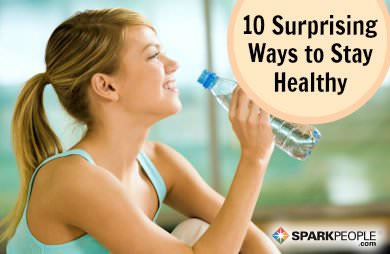
10 Surprising Ways to Stay Healthy
You wear contacts daily, your iPad is practically glued to your lap and a little marmalade on your toast sounds like a sweet breakfast move, but these seemingly innocent everyday habits (to which you barely give a second thought) can affect your health in a big way. Luckily, little tweaks to these routines can keep you safe and well all year long. Here, 10 to try.
Posted 3/11/2013 6:00:00 AM By: : 7 comments 30,044 views
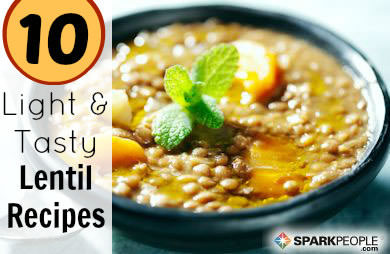
Load Up on Lentils: 10 Healthy Recipes
Don’t love lentils? We’re here to convince you otherwise. People have been eating lentils for millennia; they’re common in Mediterranean, Asian and Indian cuisines.
That’s no surprise: These tiny legumes are packed with dietary fiber, protein and valuable nutrients including folate and magnesium, so they’re healthful additions to your plate. In fact, they are one of the best meatless protein sources.
Beyond those benefits, though, they’re just delicious: pleasantly earthy in flavor, with a hearty texture that’s really satisfying. (In fact, if you don’t love lentils, you may have found them mushy and overcooked.) Lentils are typically sold dried—you’ll find black (Beluga), red, green or French (du Puy) varieties—and they’re super easy to cook and incredibly versatile. Here are 10 great ways to make lentils a healthy part of your diet:
Lentils 1, 2, 3
Think 1, 2, 3: 1 cup of dried lentils plus 2 cups of water yields about 3 cups of cooked lentils. You can double or reduce the amounts to suit your recipe. Lentils freeze beautifully, so you’re smart to cook a double batch and freeze what you don’t use right away.
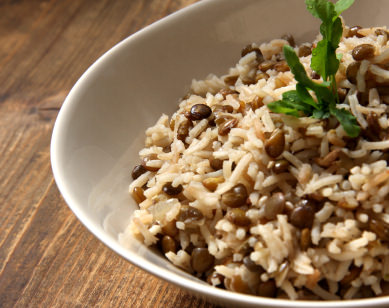
Cooking Lentils, Part 1
To cook black, green or French lentils: Place the dried lentils in a colander and rinse under cool water; pick out any debris or shriveled lentils. Bring lentils, water and a generous pinch of salt to a boil; reduce heat, cover and simmer for 20 to 30 minutes. Begin tasting for doneness after 20 minutes; you want the lentils cooked al dente, like pasta—cooked through, but not at all mushy.

Cooking Lentils, Part 2
Red and orange (and some green) lentil varieties are commonly split, so they cook much faster than their darker cousins. Also, they get softer with cooking, almost disintegrating, so red and orange lentils are great for soups or for Indian dishes. Use the same proportions of water and lentils, and cook for about 10 minutes.
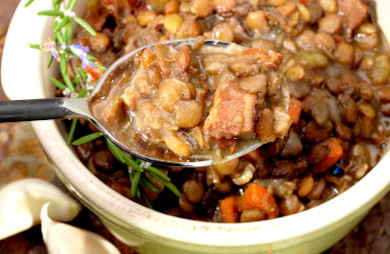
Lentil Soup with Spicy Italian Sausage
Bacon or sausage are flavorful partners to lentils, and this easy soup features big chunks of root vegetables and rounds of cooked Italian sausage; substitute chicken sausage if you’d like.
Posted 3/5/2013 12:00:00 PM By: : 68 comments 179,429 views

20 Ways to Burn More Fat
You've counted calories and walked and walked, but your skinny jeans still don't fit. What gives? We turned to the experts for tips on how to rev up your metabolism, increase lean muscle mass and avoid eating those extra calories that end up being stored as fat.
Posted 3/4/2013 12:00:00 PM By: : 11 comments 39,056 views

10 Exercises That Target the Triceps
Spring is around the corner, which means you'll be bringing your short sleeved and sleeveless tops out of storage in no time. Speaking of baring your arms: Are yours in tip-top shape? If not, you could help build strength and muscle tone in the most common problem area of the arms—the triceps—by adding some additional triceps exercises to your workout plan.
Posted 3/4/2013 6:00:00 AM By: : 169 comments 1,236,891 views

Why All Kids Need Recess
Do you remember elementary school recess? Can you conjure up vivid images of your play time?
I think I jump-roped around the globe over the course of my elementary school recess hours. The traditional, two-people-hold-one-jump rope game was my forte. I can even hear the song in my head: "Strawberry shortcake, cream on top, tell me the name of your sweetheart..." The group then sang out a letter of the alphabet with each jump. Hopefully, if the boy you "liked" started with an S or T or W, you would be able to jump long enough to land on the right letter.
As children, we looked forward to running free during that period of time during the day. No hall pass. No permissions needed. Little teacher interference. Fresh air. Pure and simple play. That was the 1970s and 1980s for me. Over the course of the past two decades, however, fewer children have been able to experience the freedoms of recess.
Perhaps the biggest contributor to the decrease in recess for children has been increased academic expectations. In a nutshell, in came academic standards and out went recess. It made sense to many: If there are higher demands academically and more accountability of schools, teachers, and children, then recess (the perceived "perk") must go.
The problem: Children need recess!
Posted 2/27/2013 12:00:00 PM By: : 57 comments 94,364 views
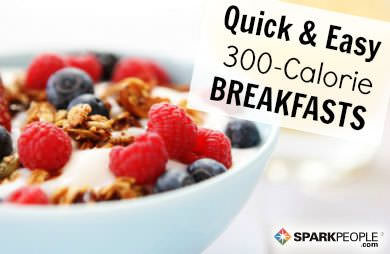
300-Calorie Breakfast Ideas
Start your day right with these delicious 300-calorie breakfast ideas.
Breakfast burrito: 3 scrambled egg whites + 1/2 cup diced tomato* + 1/4 diced yellow bell pepper + 1 Tbsp chopped sweet onion + 1/4 cup no-salt-added canned black beans + 1 Tbsp salsa, wrapped in an 8" whole-wheat tortilla
Peanut butter—pear toast: 1 slice whole-wheat bread + 2 Tbsp unsalted peanut butter + 1/2 sliced pear*
Orange-apricot quinoa: 1/4 cup quinoa* cooked in 1/4 cup calcium-fortified orange juice + 1/4 cup water; stir in 4 chopped dried apricot halves + 1 Tbsp sliced almonds
Posted 2/25/2013 6:00:00 AM By: : 19 comments 51,103 views

10 Healthy Ways to Switch Up Mac 'n' Cheese
When you think of comfort food, doesn’t macaroni and cheese instantly spring to mind? That melty combination of elbow-shaped pasta and gooey cheese never fails to satisfy. But good ol’ mac ‘n’ cheese can be a high-fat disaster if we’re not careful.
What you want is a healthier version of mac ‘n’ cheese. So we’ve assembled a round-up of great recipes with a twist: They’re made with whole-grain pasta to add a boost of healthful fiber, or packed with green veggies, or lightened up with less fat. So you can still have your mac ‘n’ cheese and eat it, too!
This recipe uses fat-free sour cream and low-fat cheese to cut fat and calories. Another smart swap: Using evaporated non-fat milk instead of whole milk to make the cheese sauce. We recommend whole-wheat macaroni here.
Posted 2/21/2013 6:00:00 AM By: : 37 comments 80,444 views
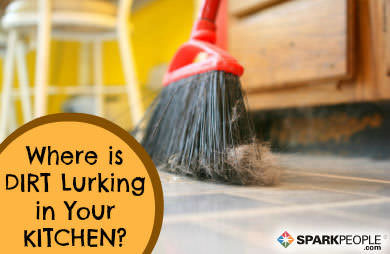
The 10 Dirtiest Spots in Your Kitchen
Think your kitchen is squeaky clean? Not so fast. "Moisture and food particles make it the perfect environment for growing germs that can make you sick," says Kelly A. Reynolds, PhD, an environmental microbiologist at the University of Arizona’s Zuckerman College of Public Health in Tucson. "If you’re not killing them, you can go from 10 microbes to millions within 24 hours." And the more germs there are, the more likely you are to get sick from one. Here’s where they’re hiding and what you can do about it.
Posted 2/18/2013 12:00:00 PM By: : 14 comments 14,177 views
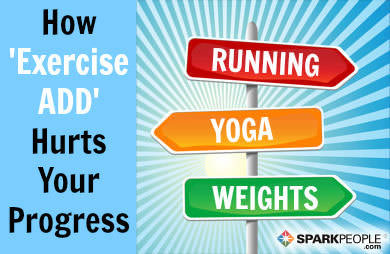
3 Tips to Deal with Exercise ADD
I see it happen all the time on exercise forums or via my friend Facebook: Exercisers (from enthusiasts to newbies) get so pumped up about a particular workout that it's all they can do, talk about or think about...for a while anyway.
After a few days (or a couple weeks if they're lucky), these people are already gung ho for something else. While their enthusiasm and consistency for working out is a very good thing, they ultimately end up complaining for not getting results.
But wait: Isn't a good thing to try new workouts to create that "muscle confusion" or get better results?
Posted 2/18/2013 6:00:00 AM By: : 106 comments 112,339 views
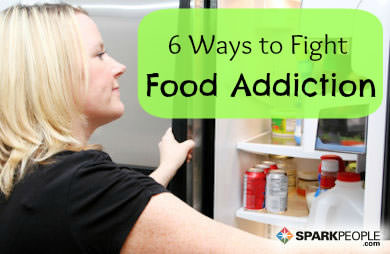
Food Addiction is Real (and 6 Ways to Deal)
Greetings to everyone. I'm thrilled to share this guest blog on DailySpark.com to share my wit and wisdom on all things healthy living. The SparkPeople community is a powerful and potent network of wonderful folks supporting one another as they strive to achieve mental and physical fitness through a healthier lifestyle. Kudos to all of you for doing your best to live the rich and rewarding life each of you so deserves.
This blog is all about the brand new science of food and addiction. As a physician and scientist and Pew Foundation scholar in nutrition and metabolism, I have devoted years to studying this issue and am thrilled to see that scientists around the globe continue to produce brilliant work to help people manage what is now emerging as a major problem in the field of weight management. Even the Secretary of Health and Human Services, Kathleen Sebelius, noted in a recent pronouncement that a new and significant cause of overweight and obesity is food addiction.
SparkPeople has done a masterful job of enlightening the community about this cutting-edge new science. I've been following the personal journeys of so many people who are struggling with cravings, binges and addictive urges for what we now call the hyperpalatables--sugary/fatty/salty/refined/processed food combinations.
Let's meet Samantha, one of my patients, who is featured in my book, The Hunger Fix, which described the new science in consumer-friendly terms.
The beast never went away, it was just hiding, waiting to strike. I was blindsided, and by the time I really consciously realized what was happening, it was too late. A clear consciousness of what was happening didn't emerge until real physical terror— I woke up choking, because stomach acid was running up my throat into my mouth from my anxiety. I had bought bags of candy, intending to make Christmas cookies for everyone, but suddenly I had to feed the beast. I hid candy in the freezer, the car, even wrapped in a sock strategically placed through- out the house. I felt ashamed, tricked, embarrassed, mortified, and angry. The anger fired me up and gave me strength to face the beast. I'm nauseous just admitting my darkest moments of addiction— my friends, family, and husband would be shocked to know! The Hunger Fix, pages 166-167
Thanks to the advent of specialized scans that allow researchers to peer into the brain, we've discovered what is now believed to be the basic mechanisms underlying all addictions. This is what is happening inside your brain:
- Your Reward Center is Hijacked: In any addictive state, we now know that the reward center in your brain undergoes organic changes. In the case of food, it's usually the hyperpalatables that cause most of the problems. Overexposure to them causes too much dopamine (the brain chemical that helps you feel reward and pleasure) to flow, overwhelming the brain. The brain can't handle this long term and a primal mechanism kicks in resulting in a decrease in the total number of dopamine receptors (the only way to feel reward is when dopamine bonds with its receptor). The bad news is that as a consequence of this downshift in receptors, your own perception of reward significantly decreases. One cupcake is not enough. 2, 3, 20 can't do it. There's no period to the end of that sugary/fatty/salty sentence. This is how the addictive cycle begins. If you have addiction genetics in your family line, this entire process is magnified. You do not have to have addiction genetics to become food addicted. You just need that overexposure from your living environment.
- Your Executive Center is Impaired: People with food addictions are constantly told "just use moderation for heaven's sake!". The problem is that the brain center that controls impulses (prefrontal cortex or PFC) is also where your willpower and discipline is housed. Scientists have discovered that in all addictions, the PFC is damaged and impaired. Try telling a food addict or an alcoholic in the middle of their respective binges to use moderation. This is not an excuse to stay out of control. It's just a scientific fact that is taken into consideration when a detox and recovery program are created.
Posted 2/13/2013 6:00:00 PM By: : 95 comments 179,711 views
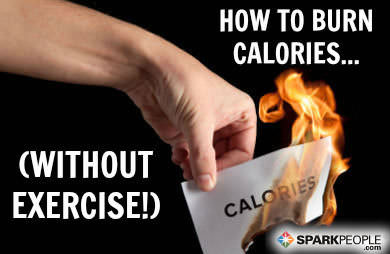
How to Burn Calories Without Exercise
Slim-Down Ideas
Splurging on a gym membership isn't the only way to weight loss. What you eat is obviously important, but how you eat can also help you reach your goal weight. Click through for nutrition tips that could help boost your metabolism. Try these pointers for yourself and you could drop 10 pounds—no sweat!
Posted 2/11/2013 6:00:00 AM By: : 30 comments 48,602 views
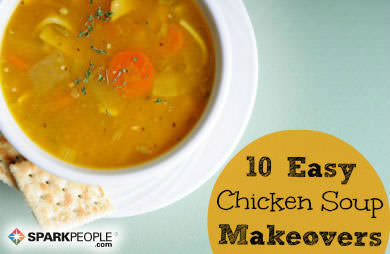
10 Great-For-You Chicken Soup Makeovers
Chicken soup has seemingly mystical properties; moms swear by its ability to cure anything that ails you.
While its medicinal attributes are still being tested, the Mayo Clinic does report that chicken soup can reduce inflammation and speed up the loosening of mucus in the nose and sinuses, which makes it a good-for-you remedy when you’re not feeling well. Add in some spice (like ginger or chile), for more relief of that stuffed-up feeling that comes with a cold. Plus, a batch of homemade chicken soup tastes a whole lot better than over-the-counter cold medicines.
Try these alternatives to classic chicken-noodle soup next time you’re under the weather—or you just want something to eat that’s warm, comforting and delicious.
Chicken Stock
Any good homemade chicken soup starts with good stock. For store-bought chicken stock, we recommend Swanson’s low-sodium organic chicken broth. But really, it’s so easy to make your own homemade stock that you should try this recipe—make a big batch and store it (in 3- or 4-cup containers) in the freezer for soup-making.
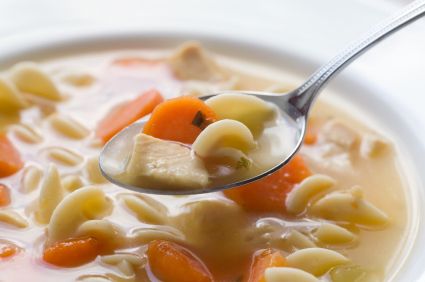
We’ll start with this simple recipe for chicken noodle soup. It has everything you want: chunks of chicken, carrots, celery and slurp-able noodles.
Posted 2/8/2013 12:00:00 PM By: : 52 comments 79,261 views
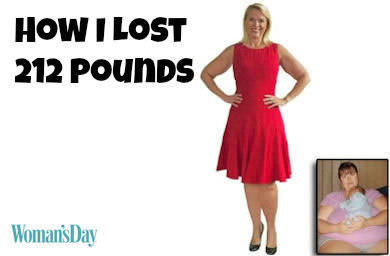
I Lost 212 Pounds!*
Jennifer Hodges, 41
Before: 369 lb
Now: 157 lb
Start
I began gaining weight in sixth grade soon after my parents opened a pizza place. I wasn't active and ate poorly. To deal with being heavy, I was the "funny fat girl" in high school and made jokes about my weight. At 23, I was 250 pounds. People always said, "You have such a pretty face, if you'd just lose weight, you'd be a knockout."
Reality Check
In October of 2008, I fell in the yard and twisted my ankle while playing with my three kids (who were all under the age of 4). At 350 pounds, I was too big for my husband to lift, so he had to get a blanket, roll me onto it and drag me inside. I was humiliated and terrified. What if I had been home alone? I knew I had to make big changes.
Posted 2/4/2013 12:00:00 PM By: : 136 comments 66,413 views
‹ Back Read More Entries ›
.jpg)

.png)


